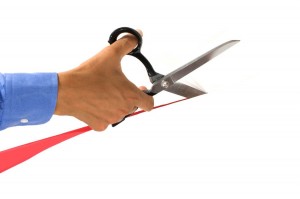Entries Tagged 'Writer' ↓
March 11th, 2013 — copywriter, copywriting tips, Writer
A good piece of writing is one of those things that’s hard to define, but you know it when you see it. 
Words that flow, sentences that are easy to follow, paragraphs that draw you in all help to create text that appears effortless to the reader. So how can you make your writing better?
Well, there’s always the good old-fashioned way of reading lots and lots of great writing and hoping some of it will rub off on you. Or you can keep reading and discover 10 tips that are easy to do and that will have a dramatic effect on your writing.
If you’re ready, let’s get started.
1. Same old, same old
Clichés, hackneyed phrases, commonplace words, whatever you want to call them, should be avoided at all costs (doh!).
If you want to stand out as a writer, take the time to think of a different way of expressing yourself rather than falling back on trite phrases such as ‘in this day and age’ etc.
2. Converse
Not a new subject to this blog, but one worth repeating over and over, the most effective way of writing is a conversational style. It’s how we’re used to communicating with each other.
It’s friendly, unpretentious and it gets to the point quickly.
Keep your language simple, your sentences simple and your message simple.
3. You
For some people, writing in the second person seems quite strange, but it’s the best way to engage with your readers.
You see it more commonly on blogs where the author is writing directly to his or her readers and recounting personal experiences, so the use of ‘you’ and ‘I’ is fairly wide spread.
So what’s stopping you from using them in your sales writing? You’re still writing to a person, you still want to engage with them, so you should be addressing them directly.
4. Stories
Everyone loves a good story – since childhood they’ve been part of our lives, so don’t stop using them now.
Just to clarify, that doesn’t mean start your brochures with ‘Once upon a time…’, that would just be daft. The story should be a case study or testimonial that shows how your product or service has helped a real person in real life.
5. Watch your grammar and spelling
An obvious one, but it still needs to be talked about.
Always check and double check your writing before publishing it. No one is expecting you to be a red-hot grammarian, but at least try and get the basics right.
The same goes for your spelling. Although your trusty spell checker will throw up blaring errors, it may not spot those occasions when you’ve used the wrong their or there. So always make sure you check your writing, or get someone else to, before publishing.
6. No flower power
Flower power?
That is what will happen to your writing if you over do the adjectives.
Adjectives are the ‘descriptive’ words that turn your writing into horrible flowery prose.
After writing your first draft, read through and cut out as many of the little suckers as you can. The end result will be leaner and far more powerful.
7. Adverbs
Yuk – a bit like the adjective, and adverb can kill your writing so chose your words carefully.
Why use a phrase like ‘ran quickly’ when ‘dashed’ has more effect?
8. !
Yes, I know I used one earlier, but surely I can be forgiven just one, can’t I?
Exclamations are great in reported speech and dialogue, but it’s unlikely you’ll be using either in your sales writing.
The words you use should be able to convey stresses without having to stick a ! at the end of them.
9. Cut
As you write you will have the tendency to add in all sorts of words that aren’t needed. Once you’ve completed your first draft, read through and cut out any words that don’t add meaning.
Tightening your message this way will increase its impact.
10. Evidence
If you write about something without offering examples or backing up your arguments with evidence, your writing is going to come across as being hollow.
Make sure you add in statistics, quotes and other research data to support your points.
There you go, I’m sure there are many other tips to help you write like a pro, but these 10 are my favourites.
If you have any other tips leave a comment below and let’s see how many we can come up with.
Author: Sally Ormond, MD and copywriter at Briar Copywriting Ltd

October 14th, 2011 — copywriter, copywriting, copywriting tips, freelance copywriter, Writer
 You’ve probably read about the idea of keeping your copy ‘tight’.
You’ve probably read about the idea of keeping your copy ‘tight’.
But what exactly does that mean?
Well, when writing sales copy your message must be clear, punchy and to the point.
If you spend an age waffling around your subject, fill your copy with adjectives and finally, 1000 words later, get round to telling your reader what you’re actually selling, it won’t be very effective.
Before you start, you need a plan and you need to do some research. Think about:
- What you are selling (the emotional impact it will have as that is the way to a sale)
- To whom you are selling
- Why you are selling it (is the timing important?)
- What you want your reader to do (your call to action)
Then, and only then, can you start to write.
Tight copy
As you are crafting your copy, here are some things you should always bear in mind.
1. Cut the clutter
As you write, you will add words that aren’t essential. We all do it, but you won’t spot them until you read your copy back to yourself. Watch out for words such as:
- Some
- Many
- Right
- Quite
- Only
- Even
- Such
- The
- Got
- Really
- That
- To
- Actually
I’m sure you can think of a few more, but these are all words that can be cut from sentences without having any effect on its overall meaning.
2. 3 part lists
These are useful when stressing a point. Remember Tony Blair’s “education, education, education”? The rhetorical effect of a 3 part list helps to drive home your point.
3. Second person
No, that’s not the forerunner of “The Third Man”, writing in the second person (i.e. you and your) makes your copy personal because it addresses the reader directly. This will help you build rapport and establish trust between you and your audience.
4. Distinguish between features and benefits
Anyone can write about the features of a product, but a copywriter will concentrate in their benefits. But not any old benefit; the benefit to the reader – saving them time, money, making them more successful, making them more attractive…
5. Bulleted lists and highlights
As well as adding interest to your page, bulleted lists and highlighted text will also draw the readers’ eye. So what better way to stress your key points than to list or highlight them?
6. Paragraphs
Most of us like to get our information in short chunks. Lengthy pages of text are a big turn-off, so use short paragraphs to get your information over succinctly.
7. Read aloud
The only way you will get a feel for your copy’s flow and rhythm is by reading it aloud.
Yes, you’ll feel ridiculous, but it will instantly identify where your copy works and where it falls short. Better to find out then than after it’s published.
Over to you
Great, readable copy is all about minimalism. That doesn’t mean all copy should be short, but it does mean that all copy should only use as many words as are absolutely necessary to get your point across.
How about you? Do you have any favourite methods you use to make sure your copy is as tight as a nut?
Leave a comment below and share them with us.
Sally Ormond
Freelance copywriter, blogger, social media addict and lover of rum butter toffees
October 12th, 2011 — briefing a copywriter, copywriter, copywriting, researching your customers, Writer
 Ever wondered how a copywriter does it?
Ever wondered how a copywriter does it?
Day after day, they sit in front of their computers writing amazing copy that compels even the most hardened cynic into buying products and services they didn’t realise they needed.
They must be truly inspiring individuals, creative geniuses, magical wordsmiths…or they could just be great researchers.
That’s burst the bubble, hasn’t it?
True, they are great writers, but their constant stream of inspiration doesn’t float down from the ether to them. They have to work at their art and that means researching.
Research, a copywriters’ best friend
Contrary to popular belief, when you send a brief to a copywriter, the first she doesn’t do is write.
Before any creativity can occur, your copywriter has to do some leg-work – i.e. research – and lots of it.
If you were commissioned to create a wedding cake, you wouldn’t just grab the deposit and start baking. No, you would sit down with your client and ask questions so you fully understood what they wanted, what their colour scheme was, whether they wanted plain sponge, chocolate or fruit cake…
In the same way, your copywriter has to research:
- You – to discover precisely what you want to achieve
- Your company – so they understand your ethos, brand and voice
- Your customers – after all, if they don’t know who they are writing to, how will they know what to say?
- Your product/service – they have to understand every aspect of it to discover its main benefits
- Your competition – they need to know what else is out there and what makes your product/service different
Only once they have done all that, can they sit down and start to craft their copy.
You see, creativity doesn’t come from thin air. It must have substance and be based on you, your company and, more importantly, your customers. Only once your copywriter has discovered who your audience is and what will make them buy, can they begin to write compelling and persuasive copy.
Guess work
What happens if they just guess?
Well, the copy won’t reflect your values or brand image. The benefits of your product or service won’t come across, so your customers won’t buy.
That’s why the research element of any copywriting project is so important.
The moral of this post is, if you want your copy to resonate with your customers and make them buy, you must allow your copywriter sufficient time to research your market fully.
February 14th, 2011 — copywriter, copywriting tips, Writer
 This is a guest post by John Brooks, a writer at Office Kitten where he reviews office furniture, business equipment and stationery online.If you are interested in writing a guest post for Freelance Copywriter’s Blog then please get in touch with your ideas/outlines.
This is a guest post by John Brooks, a writer at Office Kitten where he reviews office furniture, business equipment and stationery online.If you are interested in writing a guest post for Freelance Copywriter’s Blog then please get in touch with your ideas/outlines.
Writing is a job like any other. You have to set up the right work environment in order to start, build, and finish your writing task.
Could a welder weld in an office cubicle? Could an accountant add up a column of figures on the pitching deck of a fishing boat in the middle of an ocean storm? Could a commercial fisherman cast a net in a city street, and expect any fish? Of course not!
A professional copywriter or business writer has to set up the proper work environment for the task of writing. Here’s some tips on what to think about:
1. Pick a Writing Work Area
Pick somewhere where you will be both comfortable and efficient for hours at a time. The place should allow you to concentrate only on your writing, and not get involved in some non-related task. Physically separate your writing life from your family life, and from all other aspects of your life, and you’ll be able to accomplish much more than you realise.
2. Minimise All Distractions
Keep distractions out of your work area. Do not have a television nearby. Keep other people out, which also means you should not pick a work space through which people are continually moving. Have a clear uncluttered space in front of you in which you will do your writing. Limit the number of distracting objects within your line of sight.
3. Set Up the Right Lighting
Your work space should have enough light, whether from external windows or from electric lights, to prevent eyestrain. One good test is to see if you can read the smallest print in a magazine’s table of contents while seated in your work space. If not, you need to add some more lighting. In addition to being functional, good lighting will also improve your mood.
4. Make Your Desk and Chair Ergonomic
Your chair should be adjustable, with a high back and wheels. Both your spine and your weight should feel fully supported by your chair – you do not want to feel as if you’re about to topple over when seated. On your desk, your computer screen should be a bit less than three feet away from your eyes, and slightly below your line of vision – but not so low that you have to dip your head down to read the screen. Organise your desk accessories and your phone according to whether you’re left-handed or right-handed.
5. Organise Your Cabling
This point may seem minor, but, once you organise and label the innumerable cables and wires under your work area (and away from your legs), you’ll appreciate the effort when the time comes to unplug one thing and plug in another. What could turn into a major all-day task then turns in something you can do in a matter of seconds. And an ample supply of time is the best resource a professional writer can have.
6. Optimise the Ambient Sound
Some people think that insulating oneself from all sound is an absolute requirement for creativity. However, a lack of sound can be just as distracting as a jackhammer. Keep some soothing music, or nature sounds, playing while you work – avoid popular music or songs that you’ll sing along with. Some classical music, perhaps Brahms or Chopin, is always a good choice.
7. Organise Your Papers
Even in an endeavour as creative as writing, there’s paper. Keep your working papers organised with folders, your label maker, and colour-coded tabs. Rather than having piles of paper on your desk, invest in a hanging file that you can install on the wall. If there’s not enough storage space there, get a small file cabinet and place it close to your desk so that you can wheel over in your chair, and easily pull out what you want.
8. Keep Your Resources Handy
Keep those books you’re using for research nearby, but not scattered all over your desk – a small open plastic cube is perfect for storing books. Use your wall space as a resource – some writers use a whiteboard or a large piece of paper tacked to the wall to keep track of the larger context in which they’re doing their current task.
9. Check Your Internet Access
Internet access is a must nowadays – make sure you can get to the Internet with your computer from your work space, whether your access is by cable or is wireless.
10. Take a Break
Stop, get up out of your chair, and stretch every so often. Get up and take a short walk, even it’s only across the room to get a cup of coffee from the coffeepot. Take a long look at the view outside the window, or glance at this month’s calendar page of a beautiful landscape. Then settle back into your chair, and get back to work.










